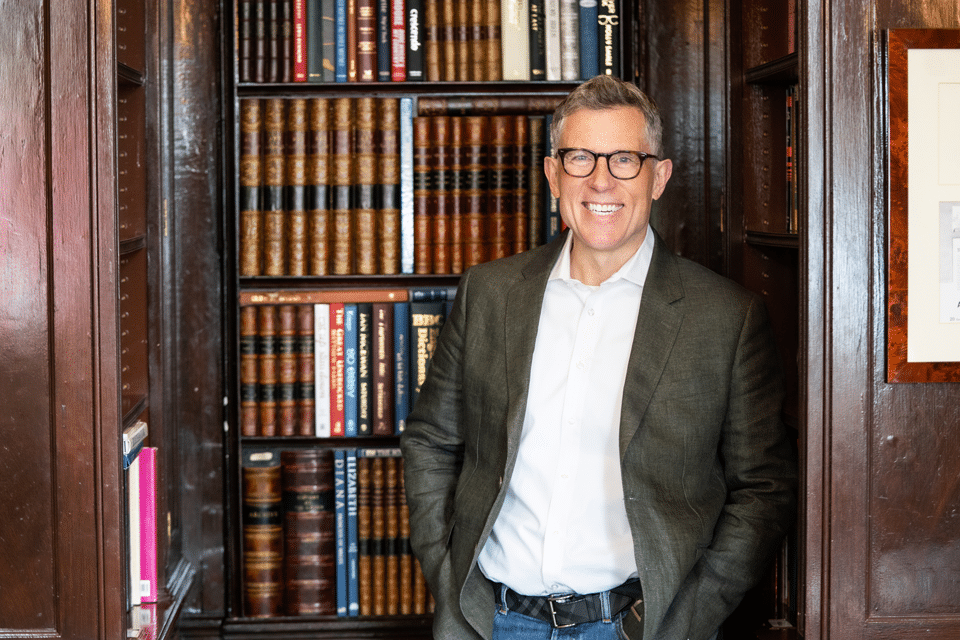The Rise of the Inter-Generational CEO: Working with Gen Z eye to eye.

The average US CEO is 51. They lead executive teams in their 40s. Their boards are populated by people in their 60s. Recognising the strengths, limitations, and blind spots that this can create is important. Each generation shares cultural and professional context. It shapes our outlook and our beliefs about how work should be done, how problems should be solved, and what may be possible.
Every company talks about becoming more digital and tech-fluent. Few know what this means. Changing the polarity of intergeneration dialogue is a great place to start. Organisations continue to be built on hierarchical platforms that artificially constrain how we interact. Roles and access in organisations are assigned based on relative experience. Whether intentional or not, the result is that interaction is compartmentalised within generational bands.
Our research has been focused on how we can unleash the exceptional potential of generational talent. Specifically, how to help organisations and CEOs look beyond tired and lazy tropes and instead tap into possibly the last great unexplored frontier of organisational capability. After all, Gen Z are the most well-educated, entrepreneurial, digital savvy, and purpose-led among us. And, lest we forget, the average age of billion-dollar founders is 34.
My co-author Helmut Schuster and I have distilled what we have learned into 6 themes. We call embracing these, working with ‘Gen Z eye to eye:’
- Break the hierarchical pyramid: Find projects, and initiatives that allow intergenerational, cross-disciplinary teams. Creating opportunities to eliminate tenure for Gen Z talent to contribute at the highest levels, is critical. We live in an age where organisations should be more fluid and agile. The old pre-eminence of position-based hierarchies needs to be deemphasized. The number one challenge for CEOs is to leverage the informal organisation. Experimenting with ‘sprint’ projects can be a great starting point.
- On depth: Deep thinking is underrated. Elegant words are overrated. Most young leaders and entrepreneurs understand this. Leaders need to send visible signs that depth, deep thinking, and content is what the company needs and wants… regardless of where they come from. There are no shortcuts. Preach the mantra think think think – do do do in exactly that order.
- On options and Plan Bs: Flexibility is key. Accepting some organisational ambiguity is necessary. Think more freely about overlapping options. Most young entrepreneurs understand this concept better than most executives in companies. Listen to them. Working on multiple overlapping initiatives comes much more naturally for Gen Z. Utilize this in your organisation. We have never heard anyone complain about having too many options.
- On Purpose and Red Lines: Genuinely (not mechanistically) defining and articulating a unifying purpose or set of desired outcomes can help all levels of an organisation break free from the shackles of bureaucracy. Emphasizing purpose, rather than tactics, unifies the entire organisation while encouraging challenge to the incongruent. Purpose, however, always needs to be accompanied by boundaries. Bear in mind one Gen Z trait is not accepting empty rules or orders. An explanation of why is always expected. The good news is, that if you have a good explanation, NextGen talent will be the fastest to adopt and advocate.
- On Permission to be called out: The young leaders we work with are very clear that even as a ‘young boss’, people tell you what you want to hear. We must work hard to break the ‘emperor has no clothes’ rule. Ask yourself how likely it is that a 25-year-old within your company would feel free to engage you in an open and honest dialogue, free from fear of judgement, and worries of having stepped on toes. This is where leading by walking around and creating opportunities for informal interaction can be very powerful.
- On People – It’s all about people: It’s shocking to see how many companies and start-ups get this wrong. Most organisations are on autopilot, selecting leaders based on years of experience, and competency frameworks. Gen Z entrepreneurs think very differently. They realise their survival depends on it. They aren’t afraid to appoint someone to a critical role with little previous experience. They keep it simple. They judge an individual’s drive, intellect, and EQ before asking themselves how this person complements the rest of the team. If their appointment is accretive, they proceed. It’s very much about the team… all for one…and one for all.
Ultimately, the challenge for CEOs is to look beyond the comfort and safety of working exclusively within the traditional organisational structure. Reaching across generational boundaries requires extra effort. However, all organisations look to the CEO and mirror their behaviours, good and bad. Engaging Gen Z talent eye to eye will give permission to the many others to follow your lead.
Written by Dr. David Oxley.
Have you read?
Ranked: The World’s Most Powerful Countries For 2023.
Ranked: Countries with the highest share of women in parliament.
The World’s Largest Gold Producing Countries, 2023.
Ranked: The World’s Most Influential Countries, 2023.
Ranked: World’s Most Forward-Thinking Countries, 2023.
Bring the best of the CEOWORLD magazine's global journalism to audiences in the United States and around the world. - Add CEOWORLD magazine to your Google News feed.
Follow CEOWORLD magazine headlines on: Google News, LinkedIn, Twitter, and Facebook.
Copyright 2025 The CEOWORLD magazine. All rights reserved. This material (and any extract from it) must not be copied, redistributed or placed on any website, without CEOWORLD magazine' prior written consent. For media queries, please contact: info@ceoworld.biz








